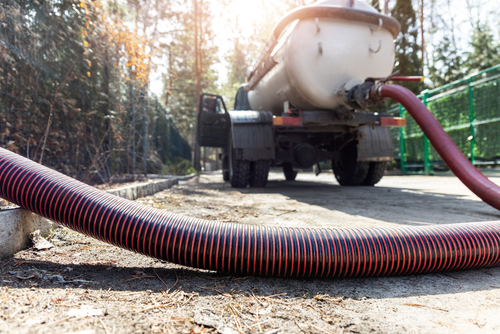Tips for Efficient Vacuum Truck Operation

Vacuum trucks are essential in a wide range of industries, from waste management to construction and environmental cleanup. These powerful machines can efficiently handle various materials, including liquids, semi-solids, sludges, and solids. However, operating a vacuum truck requires proper training, adherence to safety protocols, and familiarity with industry standards. In this blog post, we will discuss the best practices for operating a vacuum truck, offering practical tips and guidelines to ensure safe and efficient operations.
1. Training and Certification:
Operating a vacuum truck without proper training and certification can lead to accidents and injuries. It is vital to ensure that all operators have received comprehensive training on the safe handling and operation of vacuum trucks. Operators should be familiar with the equipment’s controls, emergency shutdown procedures, and safety features. Additionally, they should possess a thorough understanding of industry regulations and standards governing the use of vacuum trucks.
2. Pre-Operation Inspection:
Before each use, conducting a pre-operation inspection of the vacuum truck is crucial to identify any potential issues or defects. Operators should inspect the tank, hoses, pumps, and other components for any signs of wear, leaks, or damage. Additionally, they should check that all safety devices, such as pressure relief valves and emergency shutoffs, are in proper working condition. Any problems detected during the inspection should be addressed and repaired promptly to prevent accidents during operation.
3. Personal Protective Equipment (PPE):
Wearing personal protective equipment (PPE) is essential when operating a vacuum truck. This includes safety glasses, gloves, ear protection, and appropriate footwear. PPE helps protect the operator from potential hazards, such as splashing or airborne debris. It is also crucial to ensure that all PPE is properly fitted and in good condition to provide maximum protection.
4. Traffic Control and Clear Communication:
When operating a vacuum truck on public roads or construction sites, it is essential to establish effective traffic control measures to ensure the safety of both the operator and other road users. Adequate signage, barriers, and flaggers should be employed to alert drivers to the presence of the truck. Clear communication, through the use of radios or hand signals, should be established between the operator, ground crew, and any other workers in the vicinity.
5. Safe Operation Techniques:
When operating a vacuum truck, operators should practice safe techniques to minimize the risk of accidents or injuries. This includes maintaining a safe distance from overhead power lines, underground utilities, and other potential hazards. It is also crucial to operate the truck within its specified load capacity and adhere to weight restrictions to avoid instability or rollovers. Additionally, operators should always follow safe driving practices, such as wearing seat belts, obeying traffic laws, and using mirrors to monitor the surroundings.
6. Proper Waste Disposal:
Vacuum trucks are often used for waste management purposes, and it is crucial to handle and dispose of waste materials correctly. Operators should be aware of the specific regulations governing different types of waste and follow the required procedures for containment and disposal. It is essential to ensure that all waste materials are safely transported to designated disposal sites in accordance with local and federal regulations.
7. Regular Maintenance and Servicing:
To ensure optimal performance and safety, vacuum trucks must undergo regular maintenance and servicing. This includes routine inspections, cleaning, and lubrication of moving parts. Maintenance schedules should be established and followed, and any identified issues or malfunctions should be promptly addressed by qualified professionals. Regular servicing not only prolongs the lifespan of the equipment but also reduces the risk of unexpected breakdowns or accidents during operation.
Summary:
Operating a vacuum truck safely and efficiently requires adherence to key safety protocols and industry standards. From proper training of operators to conducting pre-operation inspections, following safe operation techniques, and regular maintenance, these best practices are crucial in ensuring a successful operation. By implementing these guidelines, individuals and organizations can reduce the risk of accidents, increase efficiency, and promote a safe working environment for all involved.
Need a Vacuum Truck? Let Us Help!
Keevac Industries is proud to carry a large selection of portable restrooms, septic, grease, slide-ins, and tank inventory. Our knowledgeable and friendly staff are eager to help you find exactly what you are looking for. As your trusted vacuum truck manufacturer, we can build service trucks to your specifications. We offer nationwide shipping as well as international if needed. Give us a call today to get your vacuum truck project started!